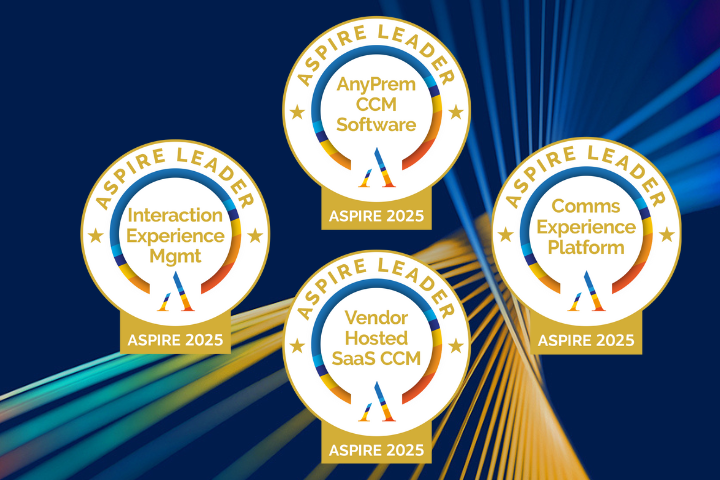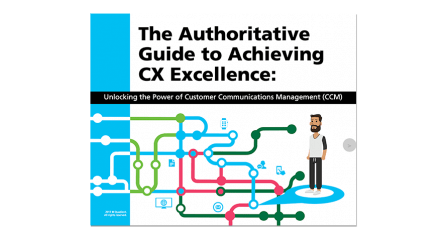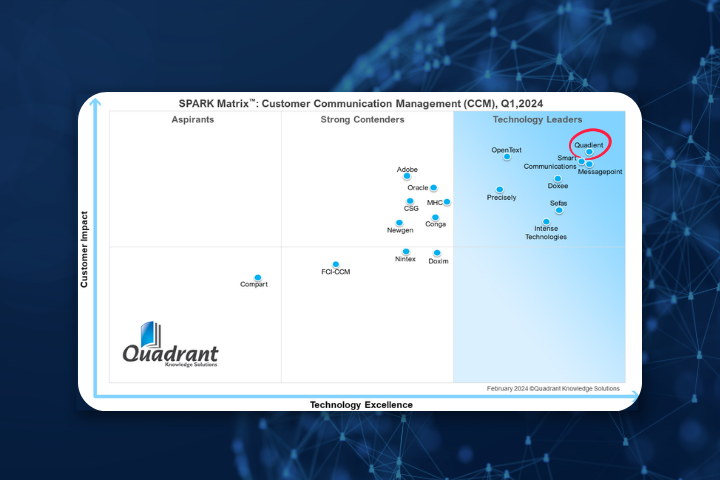Introduction to customer communications management
Today, customers expect relevant, highly personalized communications. They expect communications to be representative of their context and preference. They expect communications to be accessible via the device of their choice and available on-demand.
The way that a business communicates with its customers is a major factor in delivering a good customer experience. As such, Customer Communications Management (CCM) should be a critical area of focus for all businesses.
But what exactly is Customer Communication Management and why is it important for your business?
What is customer communications management?
Customer communication management (CCM) refers to strategies and solutions used by businesses for managing the creation, delivery, archiving, and retrieval of customer correspondence across various channels. The objective of CCM is to improve customer experiences by providing personalized, relevant, and timely communications that are delivered through the channels preferred by customers. CCM solutions typically integrate multiple technologies and processes, such as content management, delivery systems, customer data management, and analytical tools.
Communications, such as a bill from your utility company, notification from a government office, or a credit card statement from your bank, seem simple. In reality they are complex to design and deliver.
The information included in these communications come from a variety of systems:
- Customer data from a customer relationship management (CRM) system.
- Marketing messages from a marketing platform.
- Financial information from an enterprise resource planning (ERP) system.
- Brand assets from a digital asset management platform (DAM).
- Terms and conditions from a legal system and more.
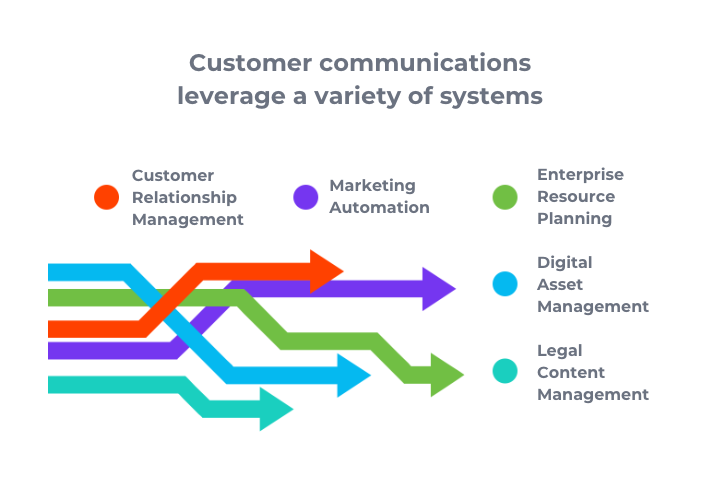
Advanced customer communications management solutions connect to your enterprise systems. They streamline customer data into a centralized content manager, resulting in a seamless experience for your customer.
Omnichannel CCM solutions go beyond print. They convert one master design into paper, digital and mobile communications that are all in sync, on brand and instantly available. This enables you to produce millions of personalized communications in hours or create them on the fly when requested. And they are all automatically archived for future retrieval.
With CCM, maintaining your documents is faster and easier. In complex businesses, all information in a customer communication is managed by a different team, including branding content and regulatory language.
This is the power of CCM. By identifying the owner of each piece of content, it enables team members to update text, images, charts, and data. Once updated, those changes are rapidly pushed to production. All changes are governed by a robust approval process to ensure accuracy before delivery to the customer.
Customer communications management solutions extend the power of your existing systems.
They leverage customer data to create compliant and highly personalized communications across channels from one centralized communications platform.
Why is customer communication management important?
Effective communication management strategies are critical to optimizing client communication across the customer journey. Customers value a seamless conversational experience. Companies have a wide range of channels to communicate through – from email to SMS to social media.
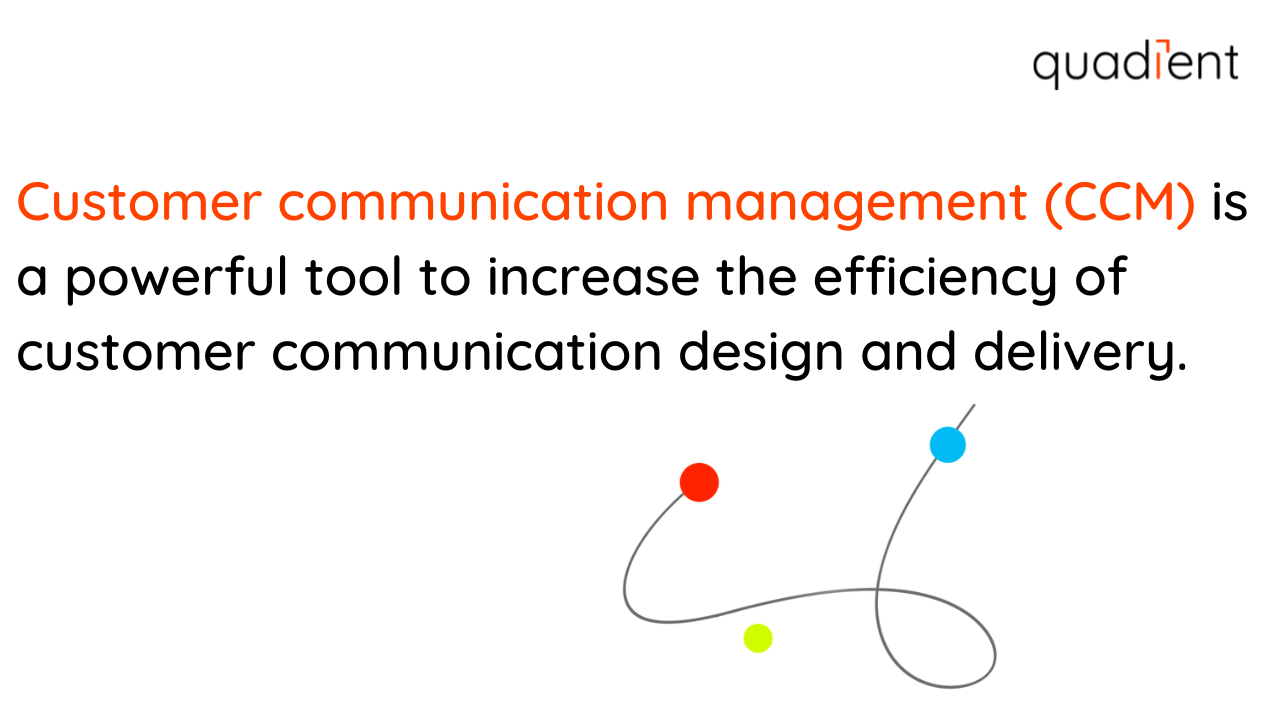
CCM is a powerful tool to increase the efficiency of customer communication design and delivery. It helps companies better engage their customers and to ultimately enhance customer relationships.
The benefits of customer communication management
While the business benefits to adopting a centralized CCM solution are plentiful, discussions around CCM can be complex at times. Let's break it down and make it simple. Here we will highlight four fundamental ways in which CCM will benefit your business.
1. Improve the customer experience
Centralized CCM platforms that enable real-time, cross-channel, interactive communications result in dramatically improved customer experience. They achieve this in the following ways:
Personalization and channel preference
Leading CCM solutions facilitate the creation of highly personalized, relevant communications across virtually any channel customers interact with your business on. Further, CCM channel preference management tools ensure that you’re engaging with customers via the channels of their choice.
Interactivity
Dynamic visualization facilitates mobile (and web) experiences that let customers engage with content using interactive charts, graphs, and sliders.
Consistency
Centralization delivers a better customer experience because designs are created in a channel-agnostic way and pushed to customers via their preferred channel. Consistent messaging, just like consistent experiences, build trust. Trust drives loyalty.
Convenience
A centralized CCM platform enables you to get the right messages to your customers faster. Additionally, it makes creating a seamless onboarding experience easy with pre-populated digital forms, electronic signature capabilities, and more.
2. Enhance efficiency
Business user enablement
Centralized CCM solutions enable business users to create, edit, and manage content, reducing reliance on IT.

Eliminate departmental and digital silos
Many organizations have separate teams dedicated to creating communications for print, mobile, email, and web. This can result in operational inefficiency, high costs, inconsistency, and regulatory risk. A centralized CCM infrastructure delivers efficiency gains since changes are easily propagated across various touchpoints and channels.
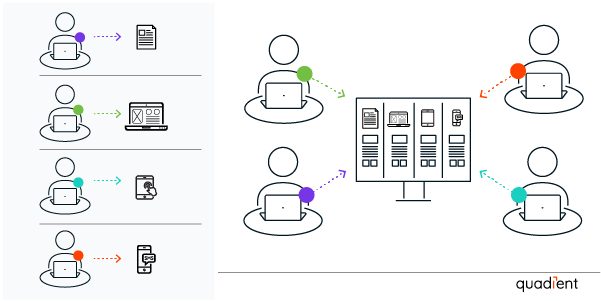
Speed digital transformation
Many traditional industries including financial services, insurance, utilities, and government have a complex infrastructure of critical legacy IT technology. Systems that were developed 15 to 20 years ago for print-centric output. Today, it’s paramount that CCM solutions integrate with existing core systems. Thus, enabling a seamless cross-channel experience through one easy-to-use interface.
Leading CCM solutions allow you to leverage existing templates and customer data to create highly personalized communications for virtually any channel.
4. Reduce risk
Content managers often view compliance requirements as an obstacle. This can be overcome by integrating compliance into the design and development of communications. A centralized CCM solution enables:
Collaboration
A content development process that enables compliance, legal, and line-of-business teams to collaborate throughout the process reduces frustration and speeds time-to-market.
A holistic view
In order to reduce errors, compliance teams need a view of the entire communications package in every form. Whether that be on paper, web pages or on a mobile application. This way, compliance teams can review and analyze what customers see and how they see it.
Greater control
Compliance personnel need the ability to manage, track, audit, and approve regulatory language quickly and easily. Modern CCM solutions ensure that changes are made in one location and applied everywhere you choose. Additionally, content blocks can be locked down to safeguard regulatory language where required.
Four CCM fundamentals
We have established the business benefits of implementing a centralized CCM solution as a part of your overall CX strategy. But what should business leaders consider when evaluating CCM platforms? How can you be sure you are investing in the right solution for your business? In this section, we highlight four important considerations when evaluating a CCM solution for your organization.
I) Invest in a centralized platform
Today, customer preferences and a rapidly changing communication landscape are driving enterprises to rethink how they manage customer communications. The more customers, channels, products, and services a business has, the more likely there are many legacy and modern systems to manage it all.
The resulting infrastructure of software, hardware, and business rules requires significant maintenance. The management of customer communications often lacks a holistic strategy.
Enterprises that invest in a centralized CCM platform can realize several benefits, as discussed earlier in this article.
However, it’s important to note that technology migration can be a complex undertaking. Therefore, it’s critical to select a CCM provider that has a proven methodology and extensive migration experience.
II) The importance of a seamless graphical user interface
The user experience is another important consideration. A seamless graphical user interface (GUI) helps to expedite employee onboarding, as well reducing frustration and increasing user efficiency.
III) Empower business users
As many businesses recognize the need to become digital masters, they are rethinking how they serve customers. In the past, when IT were the only ones involved in developing systems, it led by default and maintained control. However, businesses become more digital, it is the line-of-business that dictates how things should be done. While the IT department often acts as an enabler.
Collaboration between cross-functional employees is increasingly important. To create and deliver relevant, and personalized communications, business users need to take ownership of communications, with approval workflows that connect all stakeholders.
Select a CCM platform that enables business users to create, edit, and manage content, instead of relying on IT users to make required changes. Large organizations send millions of customer communications each month. These communications are potentially based on thousands of document templates. Managing change for those document templates is costly and time consuming, so it is clearly a win to offload those responsibilities to the business.
IV) Architecture that matters
One of the biggest challenges when managing customer communications is the lack of a comprehensive strategy. The older an enterprise is, the more likely it is that they have a jumble of legacy and modern technology platforms. The rapid introduction of new communication technologies has led to businesses adopting one-off tools to handle output to these channels. Additionally, for many organizations, mergers and acquisitions have resulted in a greater number of IT tools and platforms to manage.
Migrating to a single CCM platform ensures consistency in how communications are created and delivered among the various lines of business. In addition, it enables you to standardize processes across business lines.
Here are five important considerations relating to architecture and integration:
a) One platform to rule them all
Earlier we established the importance of a seamless GUI. This is crucial from a usability standpoint as well as from an integration standpoint. Many leading CCM solutions are made up of several acquired applications or products. This results in a mishmash of technologies that make integration (and IT support) a challenge.
b) Flexibility
Seek a platform that meets your current deployment needs as well as future requirements. Whether you want to deploy a solution on premise, in the cloud, a hybrid of both, or as a hosted managed service.
c) Integration and open technology
Customer communications touch nearly all parts of your business. To create personalized communications for all channels, your CCM solution needs to integrate seamlessly with various technologies including:
- Core systems (CRM, ERP, ECM, etc.)
- Line-of-business systems (core banking, claims/billing, underwriting, etc.)
- Legacy systems (transactional systems, homegrown applications, production management, etc.)
- Adjacent technologies (BI and BA tools, archiving systems, mobile applications, etc.)
d) Enabling next generation communications
Implementing technology that aligns with short and long-term goals assures that the technology evolves with your evolving communication requirements. Many CCM solution providers keep up with the latest trends. They deliver modern CCM platforms that enable enterprises to quickly go-to-market with communications delivered in a new channel.
e) Personalization: using data to build customer loyalty
Many organizations sitting on a data goldmine. They have access to billions of data points on their customers. These data points can be leveraged to engage in a highly contextualized manner.
Ninety-four percent of companies agree that personalization is critical to their current and future success. But almost half say that IT roadblocks (47%) and legacy technology (46%) are “major barriers” to their personalization efforts (The Realities of Personalisation Report. Econsultancy & Monetate).
The key to delivering a personalized communication experience is in the supporting technology and its integration capabilities. Your CCM solution must be able to pull data from anywhere within your existing data ecosystem to create highly-personalized, relevant and timely cross-channel communications.
Buyer beware: Some CCM technologies require you to extract, manipulate, and load your data into an XML file before you can leverage it. This wastes valuable time and resources. When evaluating CCM solutions, businesses should ensure that the technology can meet their integration needs and CX goals. Thus, a proof of concept is critical.
How to get started in customer communication management
The myriad CCM solutions available to choose from can make it difficult to determine which solution is the best fit for your business.
We recommend taking a strategic approach to acquiring the right solution. This approach should include careful planning and comprehensive requirements gathering. It also requires an evaluation team driven by an aligned organization and the support of executives.
Want to learn more? Download our Apex guide to customer communication shopping for 75 crucial questions to ask when buying a CCM solution.
Conclusion
Companies often struggle to execute a comprehensive CX strategy because they have not put the necessary customer communications foundations in place. Modern CCM solutions help companies create a unified customer communications infrastructure to deliver omnichannel experiences that span the entire customer journey.
Download our free coursebook CCM 101: A Beginner’s Guide to Customer Communication Management Technology to learn more.




